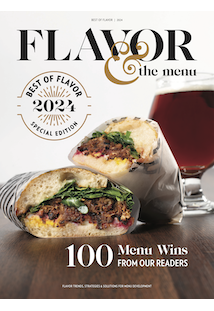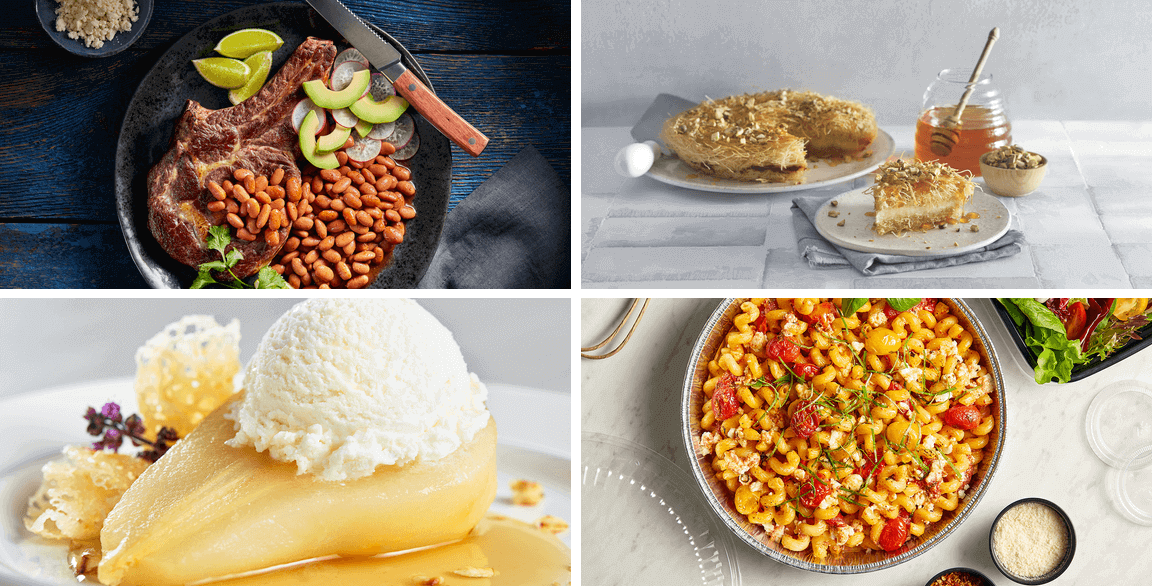

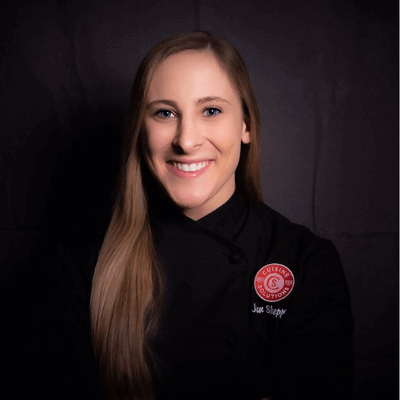
Jenn Sheppard
Sous Chef, Culinary Innovation
Cuisine Solutions
Kitchen Collaborative is a recipe-development initiative formed by Summit F&B and Flavor & The Menu. To fuel flavor innovation, a group of talented chefs partnered with sponsor brands and commodity boards to create recipes that showcase the passion and potential of our industry.
CHEF SPOTLIGHT: Jenn Sheppard
As sous chef for Cuisine Solutions, the Virginia-based supplier of sous vide cuisine, Jenn Sheppard has become something of an evangelist for the innovative cooking method, calling it “matchless” in producing superior flavors with remarkable consistency. While only half of the recipes in her Kitchen Collaborative collection were prepared via sous vide, all four dishes reflect her deep understanding of menu development approaches that prioritize efficiency and ease in the kitchen, without any sacrifice in quality and complexity of flavor builds. Her recipes for Feta, Herb, Tomato Pasta Bake; Sous Vide Ribeye With Texas Ranchero Beans; California Manchego Ice Cream and Kunefe with Orange Blossom Honey Syrup showcase how this sensibility can be applied across the menu.
Sheppard credits her colleagues as an important source of culinary inspiration: “I feel very fortunate to work in an environment where I am surrounded by chefs with diverse cooking backgrounds, and who are on a quest for innovation,” she says. “Being immersed in an environment where creativity is essential and unusual ideas are welcomed, I immediately felt right at home.”
Feta, Herb, Tomato Pasta Bake
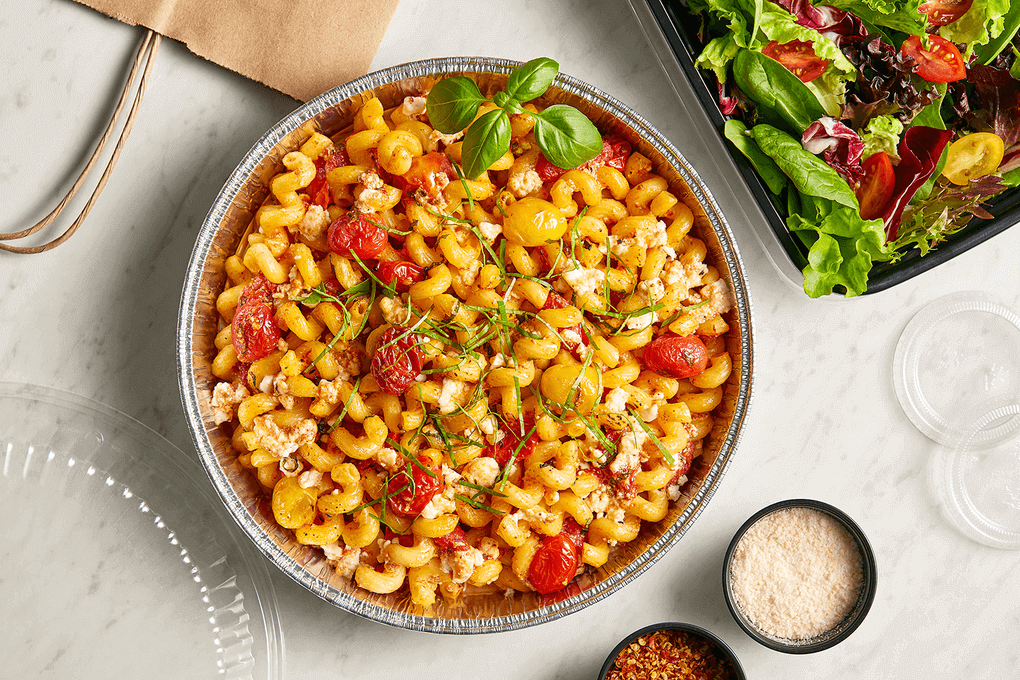 Photography: Carlos Garcia // Food Styling: Peg Blackley & Bree Williams
Photography: Carlos Garcia // Food Styling: Peg Blackley & Bree Williams
In the early lockdown days of the pandemic, social media went wild over a few breakout home-kitchen culinary trends, such as the ubiquitous sourdough. But it was the myriad variations on a baked feta pasta shared on TikTok and Instagram that inspired Sheppard to create her own take. “I feel it’s essential for chefs to follow food trends on social media,” says Sheppard. “These trending dishes are valuable opportunities to captivate customers.”
The challenge is elevating the dish in a way that makes your menu stand out from the competition, Sheppard says, while making smart back-of-house decisions to minimize prep stress and cost. “Barilla’s new IQF pasta line is a game-changer for restaurants,” she says, pointing to its time-saving advantages and touting its consistency and ease of preparation. “This famous dish—seen around the world after going viral—has been made even easier with the Barilla IQF Cellentani Pasta.”
Another point of distinction in Sheppard’s version is her use of cow’s milk feta. “If using sheep’s milk feta, remember that it tends to be much saltier,” she notes. Chefs may opt to omit any added salt or adjust the amount of feta to taste. In a final tip: “If using a block of feta, save the brine for adding bright notes of flavor to other savory dishes,” she suggests.
Sous Vide Ribeye With Texas Ranchero Beans
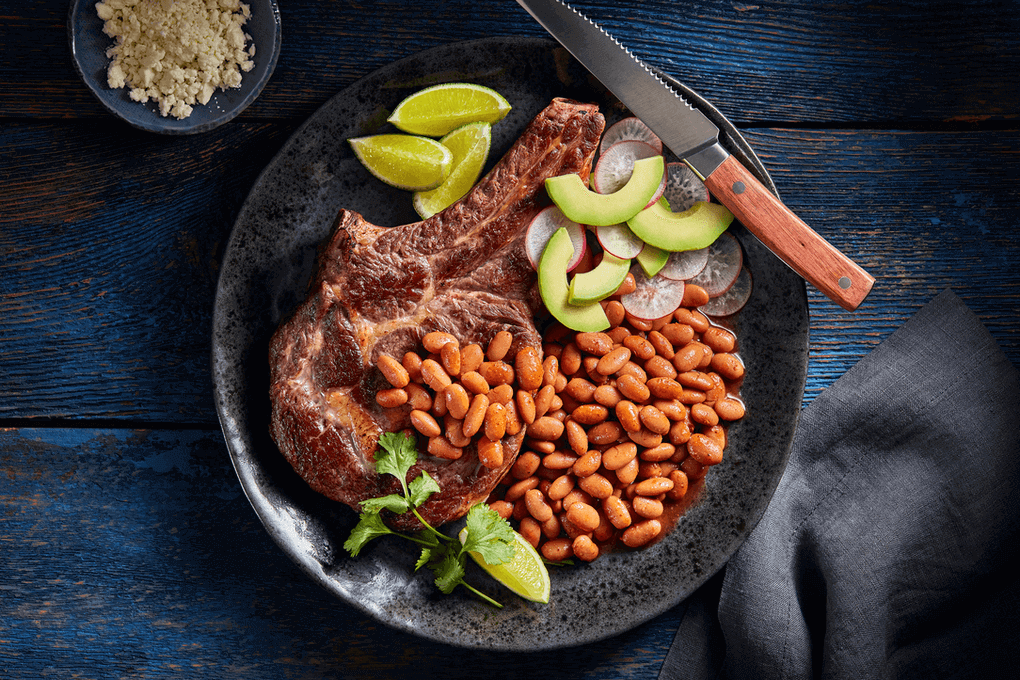 Photography: Carlos Garcia // Food Styling: Peg Blackley & Bree Williams
Photography: Carlos Garcia // Food Styling: Peg Blackley & Bree Williams
An enthusiastic advocate of sous vide cooking, Sheppard is especially partial to the advantages this method offers in preparing ribeye steak. “Employing it with a ribeye is one of my personal favorite applications,” she says. While it does require training and practice, when mastered, sous vide is a “foolproof method of cooking steak to absolute perfection, enabling chefs to replicate the results every time,” she insists.
The steaks are seasoned simply with salt, black pepper and blended oil before being vacuum-sealed in food-grade plastic bags. After cooking in a hot water bath (132 degrees F) for two hours and then quick-chilled, the steaks are removed from the bag, dried, rubbed with oil and then seared for 60 seconds on each side. After a brief basting of butter, they are set aside to rest before service. The key is the temperature of the hot water bath, which ensures that the fat and flavor remain inside the ribeye, “where it belongs,” says Sheppard.
Bush’s Ranchero Beans play more than a casual supporting role in this dish. “A sous vide ribeye is the ultimate dinner showstopper, but everyone knows that side dishes are everything,” notes Sheppard. “This is why I made sure these flavor-packed beans with Tex-Mex garnishes—including lime wedges, avocado slices, cotija cheese, radishes and cilantro—are at the forefront of this dish.” The Ranchero Beans showcase robust flavors, she says. “The Mexican oregano adds earthiness, the cumin adds warmth and together, the subtle spices give the pinto beans a nice kick.”
Sheppard believes the dish offers multiple solutions—through both the product choices and preparation method—for operators challenged by rising costs and staffing shortages. “It reduces prep work in the kitchen, but without compromising on flavor,” she says. “It’s a win-win for all foodservice professionals.”
California Manchego Ice Cream
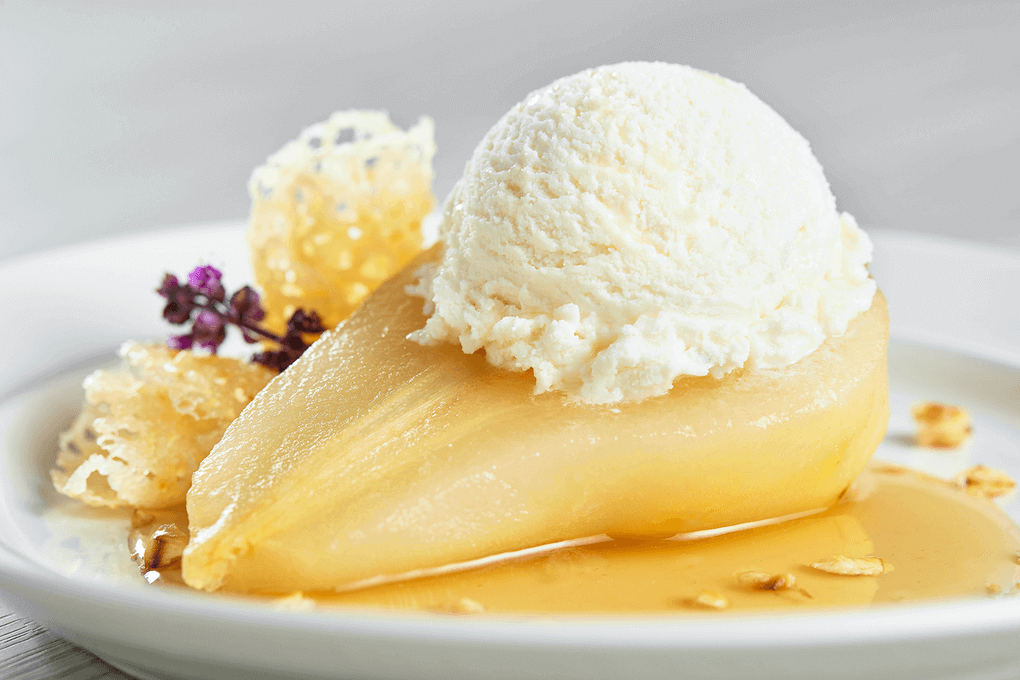 Photography: Carlos Garcia // Food Styling: Peg Blackley & Bree Williams
Photography: Carlos Garcia // Food Styling: Peg Blackley & Bree Williams
This dessert dish was inspired by one of Sheppard’s personal flavor dilemmas: “I have a savory palate, but I am often conflicted, because I really love and appreciate the texture of ice cream,” she explains. Her solution is a savory ice cream featuring California manchego cheese and made via sous vide.
“Manchego is one of, if not my very top, favorite type of cheese,” says Sheppard. Grated manchego is the star of her recipe, used in the ice cream, as well as for a crispy cheese tuille garnish, which is paired with fresh pear slices and roasted hazelnuts. “The garnishes really bring this dish together by adding contrasting textures and highlighting the subtle sweet and nutty notes of the California manchego,” she notes.
Savory ice cream presents intriguing opportunities for menu developers. Experimental ice cream flavors have settled into an enduring trend in recent years and tend to appeal to diners with more daring palates, says Sheppard. “To increase the marketability of this dish, I recommend incorporating sweet toppings when plating to contrast with the savory flavor profile and be more approachable for less-adventurous customers.”
Sous vide cooking gives chefs the ability to seamlessly infuse ingredients to create impressive flavor profiles, says Sheppard. “The ultimate benefit is the unmatched creamy and silky texture you can achieve while cooking in one bag, with a straightforward prep process as an added bonus.”
Kunefe With Orange Blossom Honey Syrup
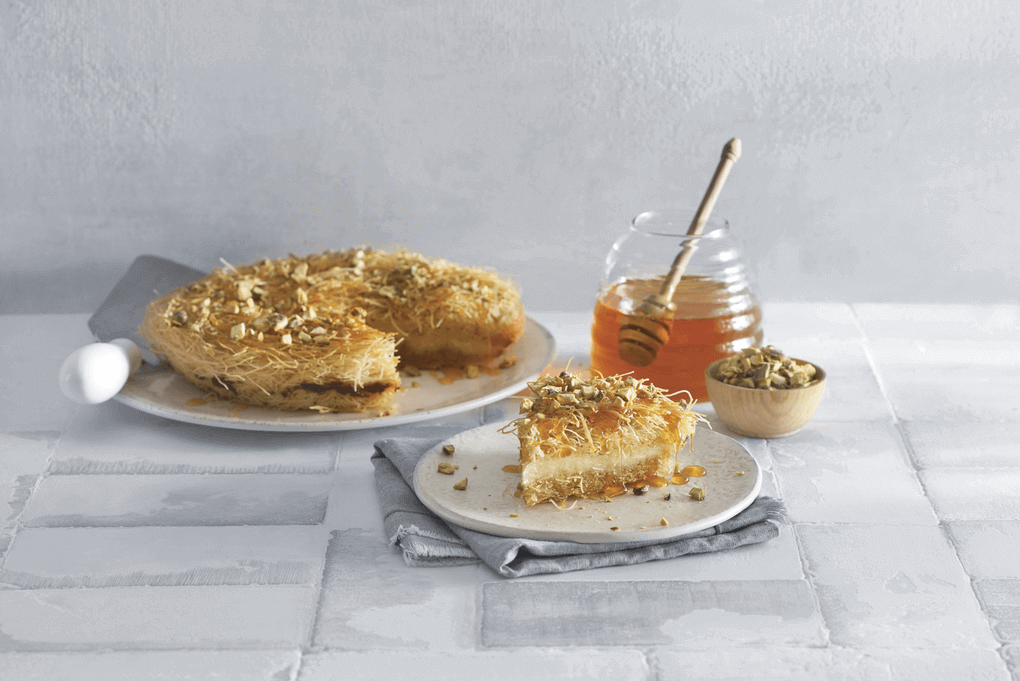 Photo credit: National Honey Board
Photo credit: National Honey Board
Kunefe, the luscious Turkish cheese pastry dish, is a delightful dessert recipe on its own when made with traditional ingredients, says Sheppard. She opted to dial up the sweetness factor by adding a transformational orange blossom honey syrup. “It’s the true star here,” she says, describing the flavor profile of this honey varietal as very floral and slightly fruity. “The citrus notes provide a pleasant aroma and add depth to the flavor of the sweet syrup,” she says.
Another key adjustment to the recipe makes it easier for chefs to adopt it with accessible ingredients. Notably, Sheppard makes a key swap with the cheese: “Traditionally, Turkish cheeses such as Kashar are used in this dish, but mozzarella works perfectly,” she explains, adding that any low-sodium melting cheese would be a good fit.
The foundation of the pastry is kadaifi, a shredded phyllo dough. Sheppard offers a prep tip here for chefs planning to shred prepared sheets of phyllo dough: “Cut them into thin strips by hand with a chef’s knife, as a food processor tends to damage the long strands of dough that you are looking to achieve.” The layers of phyllo and mozzarella are baked until golden brown and then the orange blossom honey syrup—made with the honey, water and orange juice—is ladled on top. “It is so satisfying to watch the honey syrup absorb into the pastry and sizzle around the edges of the pan as you pour it over the dish,” says Sheppard. Chopped pistachios sprinkled on top are the finishing touch.
Project Management: Summit F&B
Photography: Carlos Garcia // Food Styling: Peg Blackley & Bree Williams

